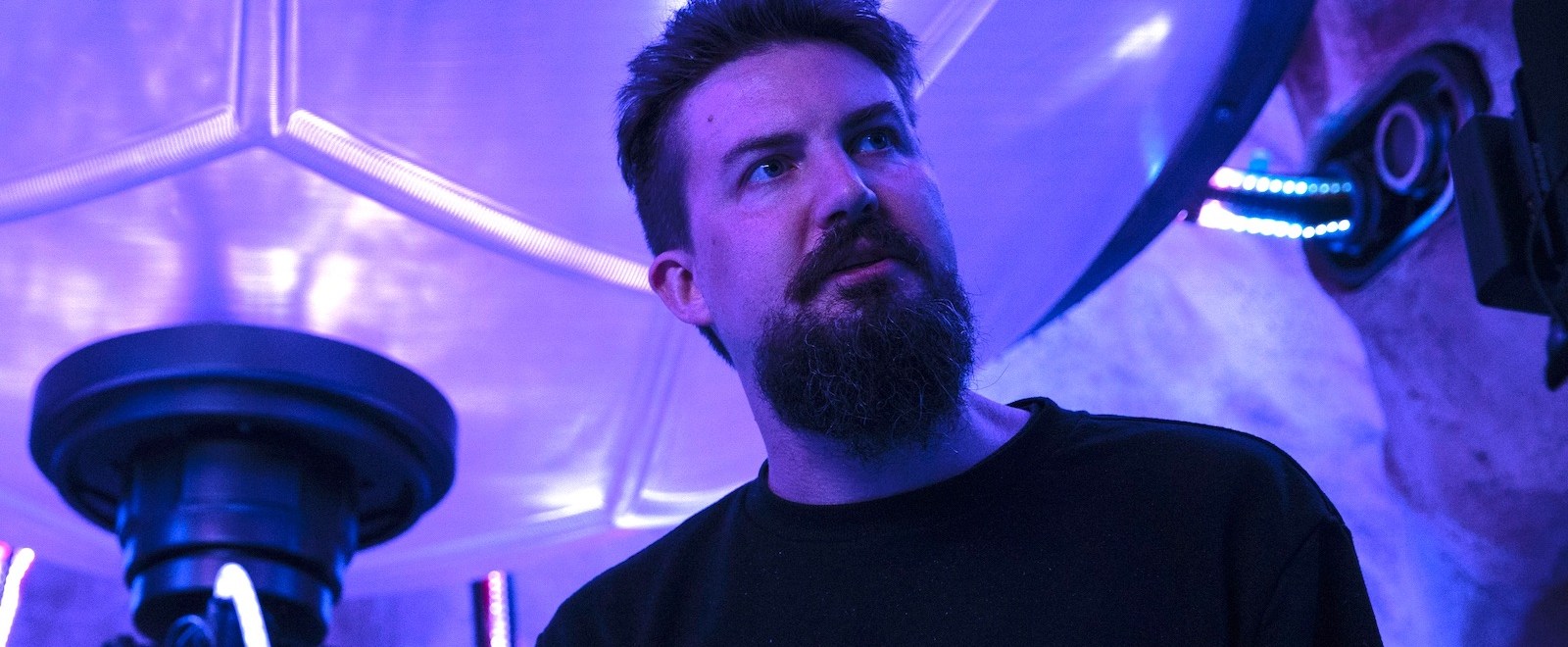
Earlier this week is was announced that Adam Wingard and his writing partner, Simon Barrett, would be making a Thundercats movie. Wingard is currently promoting Godzilla vs. Kong (which comes out today in theaters and on HBO Max), but it was during post-production on his current film that he decided, “Yeah, I think i can make a Thundercats movie.” And make no mistake, Wingard is obsessed with Thundercats. If there is one human being on Earth who should make a Thundercats movie, it is Adam Wingard. And usually when a director’s new project is announced, in an interview they might say a couple sentences about it. You know, something like, “Well we are really excited but we can’t say too much.” In this case, it actually seems like it would be difficult to get Wingard to stop talking about Thundercats, almost as if he’s trying to will this movie into existence. (Not that I’d want him to stop. The more Thundercats talk in this world, the better.)
Wingard is also working on a sequel to Face/Off, which just sounds crazy but, yeah, let’s do it. Wingard is adamant it’s a sequel, not a reboot. And he has hopes that both Travolta and Cage will be in it, but it’s still in the scriptwriting phase and he gives us an update on that, too, as we talk about what we find “believable” about the first movie and what we do not, which winds up being a lesson in futility.
Okay, so I have a dumb stunt. Are you ready for my dumb stunt?
I’m ready.
Okay, it’s me now placing my Lion-O action figure behind me on a shelf for my Zoom background. There he is. Okay, that was my stunt.
Worth it. It was worth it.
Do you want my Thundercats story? It’s like 20 seconds long.
Oh my God, I’d so love to hear. I’m so ready to hear anything about Thundercats.
Okay. I was 11 years old and it’s that weird age where you kind of want to start acting older. Like, oh, I don’t have toys anymore. Anyway, I’m at Walmart in Missouri with my mom. And I beg my mom to buy me Lion-O and Mumm-Ra. And I remember we’re in line, waiting to pay. And a classmate named Jeremy comes up…
He sees you buying the toys?
Yeah. He looks in the cart and gives me that, “Oh, you’re still doing that?” look. And walks off.
Well, that’s how I felt in high school when I was writing the screenplay. Because, at the time really, honestly, for Thundercats obsession, it kind of passed. But really it sort of had been brought back a new light with Toonami, Cartoon Network. They were airing it. I mean, because I always loved it as a kid. It was always my favorite, but then it kind of went away for a couple of years. And then it was like in middle school, high school that it started re-airing and that just really threw me right into my obsession. And I mean, honestly, every day, I would have my VCR set to record because I think Thundercats came on right when I was just finishing school. And so, it was really important that I got every episode so that I could re-watch and study them and stuff. My obsession was big. I was asking some friends of mine if they remembered it recently. And they’re like, “Yeah, we remember that’s all you were doing.”
I hope this is a trend with you and you keep doing the mid ’80s cartoons. We can get Centurions. We can get Sectaurs.
Well, you know what’s funny, is I’ve been thinking about that a lot lately, because some of the things I’m most proud of obviously are my standalone films that were created from ground up, with me and Simon Barrett. You’re Next and The Guest are probably two of my films I’m most proud of.
You’re Next, filmed in Columbia, Missouri…
That was, yeah! You mentioned Missouri…
I went to college in Columbia. But that incident with Lion-O and Mumm-Ra happened maybe like 40 miles from there.
I mean, Columbia, Missouri was a really important place for me, because that’s where Simon [Barrett] and I, we did A Horrible Way To Die, VHS and You’re Next there. And so, my roots in filmmaking have really now, weirdly, they’re tied to Columbia. The Thundercats thing is interesting, because, I’d kind of written it off for so long. Because, like I said, as a kid, it just seemed like it was impossible. And so it was only really actually during the pandemic – and I would say during the late phases of the Godzilla vs. Kong post – when I started getting shots in from the Hollow Earth scene. I started looking at it and, honestly, this is how it started. It was literally I was looking at shots of Hollow Earth and I thought, god, this is exactly what a Thundercats movie should look like. And then I thought, wait a minute, I could make the Thundercats movie! And it’s like, this is what it should be. And up until now, I kept hearing that there was always this kind of peripheral, maybe Hollywood’s going to do a live-action Thundercats.
That’s what I was going to ask you. Because I get my hopes up every time, and then it doesn’t happen.
Well, I do too. And I think it’s for the best that it didn’t happen. Because I think that even the script that I read that was developed, which was in a pretty good place, I’m not going to lie: I looked at it and I was like, “This is actually not too bad.” I was not expecting a lot, so there’s a lot of good foundation within that. I’m going to do a lot of different stuff to it. But I think the thing was is that it was clearly designed to be shot live-action. And so, there are certain things that when you read it, it doesn’t feel totally Thundercats because you can tell they were thinking of the limitations of live-action cinema. And anytime I picture the Thundercats live-action it’s basically just putting makeup on people, it just looks ridiculous. It just doesn’t seem right. Because everybody, always, they think, oh, the Thundercats, they have to look like cats. But if you really look at the Thundercats, it’s not like they’re conventionally looking like a cross between cats and humans, they’re different. They’re Thundercats. They’re bigger than that and stranger than that,
And sometimes they walk around naked and it’s not a big deal.
Yeah! That first episode, they walk in, “Should I be watching this?”
It is very strange to watch it, because none of them are wearing clothes, but when they become the hero version, they get clothes.
Yeah, the clothes are somehow associated with that. No, it really is funny. So going back to that kind of a-ha moment when I was making some scenes of Hollow Earth: I looked at that, and I thought the technology’s there. And my experience, not just with the aesthetic of Hollow Earth, but also I felt like making King Kong such a well-rounded CGI character, that was so emotive and believable and filled with limitless possibilities for me as a director, that’s when I was like: I can do a Thundercats movie, and it would actually work. And so that’s when I started kind of pushing in that direction. And honestly, we would have actually been a little bit further ahead, but the pandemic just slowed down the whole process. But now we’re finally in a place where we’re getting started. And I mean, Simon and I are having so much fun on this thing, in a way that we’ve never had before.
We’ve been working together a lot over the pandemic. We wrote a script, which it will be a surprise to people. It is an original script. We have an original that we want to do. Obviously, we’ve been working on Face/Off 2. We’ve been having so much fun on that. But every time we talk about Thundercats, it’s just, we’re not even worried, because the ideas just roll like an avalanche. It’s like, a five-minute jam session with Simon talking about Thundercats and we’re just coming up with insane, crazy set pieces that are just so exciting. So we’re just excited to get it into it, man.
Working on a Godzilla and Kong movie, did you also feel you now had the personal cache as a director to get something like Thundercats made?
Well, that’s exactly it, because I’ve been in a situation where I’ve been working on franchises for the last couple of years. And it’s not because I just want to do that forever, but these are franchises that are really exciting to me and important. But like you said, I’m kind of building my career upwards as well. And I’m finally at a place now where I can build projects from the ground up. And so, there’s a big difference even between what I’m able to do with Godzilla vs. Kong, which is a lot, but it’s a project that already has foundation before I arrived. And even though Thundercats is a rewrite, it’s technically a rewrite, but Simon and I are going to do whatever we want to it. We’re able to start that from the ground up.
The same thing with Face/Off 2. We came in there, there was nothing, and we started from the ground up. And that’s what’s exciting about: this next phase of my career is being able to really utilize the trust that I’m building with the studios and all those kinds of things, and to be able to get these bigger budgets, and to put it into these properties and be able to bring out what excites me about them the most.
Honestly, it’s been kind of scary over the last few years. And it’s not like I would have had trouble making another movie, even if Godzilla vs. Kong was a failure or something, I could have figured out how to get even a lower budget or something. But for me, my ambition is very high, and I have a lot of things that I want to do. And so for me, I look at Blair Witch and Death Note were kind of two strikes against me critically, those movies. I’m proud of them, but they just didn’t quite land the way they should. And so, I had this moment kind of early on Godzilla, where I’m in the concept room early 2018. I’m looking at all this stuff. It looks absolutely incredible. I’m so excited, but I’ll have these little moments where I’d just suddenly think, “There’s a lot at stake here.” People have so much expectation, not just for these characters, but then there’s the added expectation of, does he still got it? Can he get back to that place that everybody loved from The Guest and all that kind of crap? And so for me, it was just like I had to put that out and just push it away and just focus on the movie and just believe in it.
You mentioned Face/Off 2. The one thing that drives me nuts about the original is, at the time, Travolta and Cage do not at all have the same body type. So they aren’t really just switching faces. Somehow, please don’t do that…
There’s always a couple of ways you can approach these kinds of things.
And, yes, it’s weird that I accept the rest of it. But that part I’m like, “I don’t know about this.”
No, we try to address that in this film, because also this is over 20 years later from the first movie. So technology in terms of what in the Face/Off world they can do has advanced, and those kinds of things. So we try to make sure that when the stuff comes up, that we’re checking those boxes and making sure that’s addressed. But at the end of the day, it’s like… Yeah, that’s all I’ll say about that, because it’s one of the things. I don’t want to give anything too much away, too early.
I saw it in theaters. I remember at the end when Archer is still in Nic Cage’s body in the ambulance and takes his wedding ring back, and he puts it on, but it doesn’t anywhere near fit. And I remember the audience just going, “Uhhh.” Groaning like, that doesn’t make sense. And that’s what always stuck with me.
[Laughs] Well, that makes sense. That’s a logical thing to get hung up on, for sure.
Yeah, in a movie like that, it makes a lot of sense to be hung up on these things.
That’s the challenge with a film like Face/Off, because it’s such a heightened kind of film. And, honestly, you deal with that in Godzilla vs. Kong. And sometimes you have to pick your battles. For instance, on Godzilla vs. Kong, you’re having to constantly say, “Does it matter that this makes sense? Is it worth spending time to try to explain this away? Is it always just going to come off like an excuse or scientific mumbo-jumbo?” Sometimes you need a little bit, sometimes you don’t need it at all. And you go through this whole process of trying to always figure out what’s the least amount you have to give and that people even want in general. And we found ourselves trying to cover a lot of bases. It turned out that it just didn’t matter to people. That you show it to people and they’re like, “No, no, I get that. Why are the characters talking about it still? It’s boring.” And you’re just like, all right, cut it out. But on the page, it seems like this is so important, it has to be that way. And I think when I look at Face/Off, the original, the batting record for things they get away with versus what they don’t is probably one of the most impressive of any film I’ve seen.
And I think that’s why we’re actually getting a lot of credit for delivering on Godzilla vs. Kong, because we embraced the fact that’s how people perceive these movies. I mean, that’s how they want to enjoy them. It’s like, could I deliver the most realistic, grounded version of Godzilla vs Kong? Well, I guess I could, but it’s kind of already been done. If you just look at Shin Godzilla, they’ve done a meeting where it’s literally characters in boardrooms, discussing what they’re going to do, down to every detail and realistic thing. It’s a great movie, but it’s already out there. And it’s like, what I think that American audiences, and I think worldwide audiences want to see when they hear a movie called Godzilla vs. Kong, is they want to see King Kong punch Godzilla on top of an aircraft carrier.
And they will see that.
It’s like, does that totally make sense? Does the weight logic make sense? I mean, maybe, maybe not. Who cares? Just let them fight.
‘Godzilla vs. Kong’ opens in theaters and via HBO Max this weekend. You can contact Mike Ryan directly on Twitter.

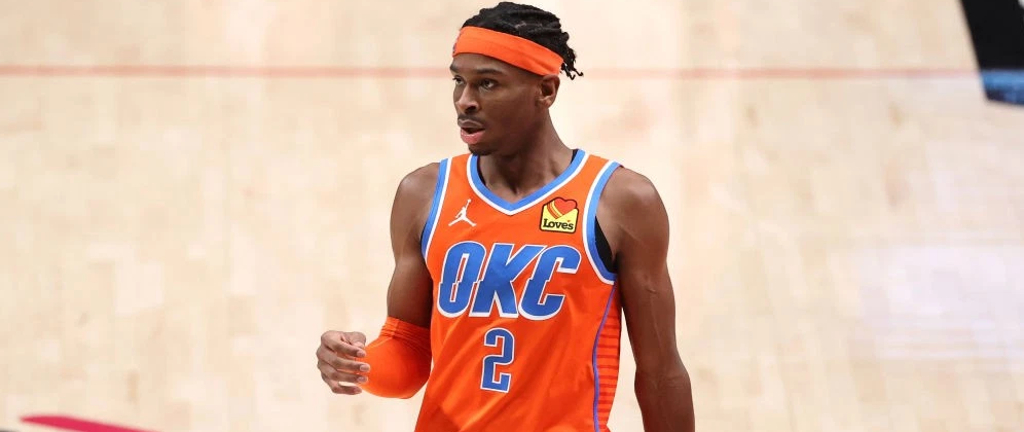

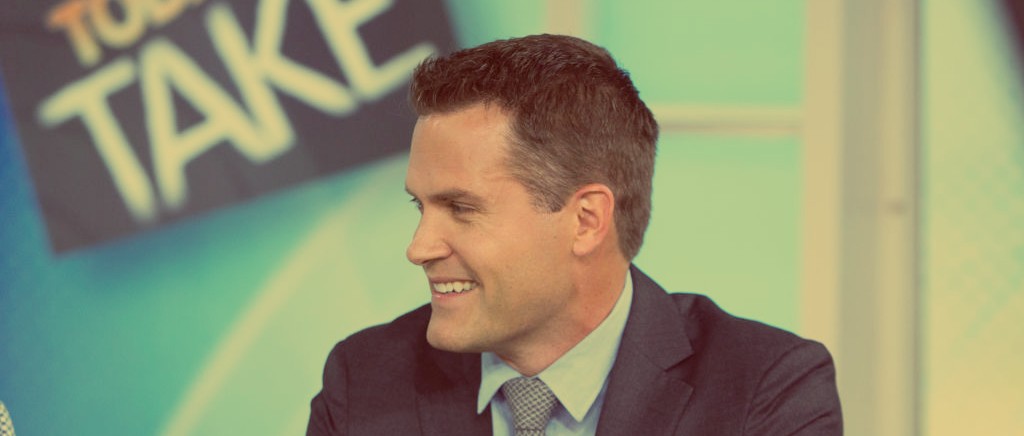

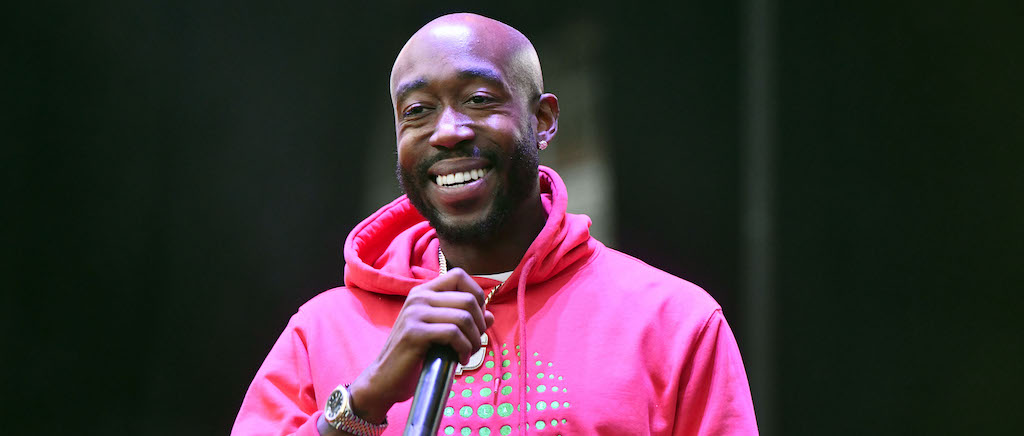
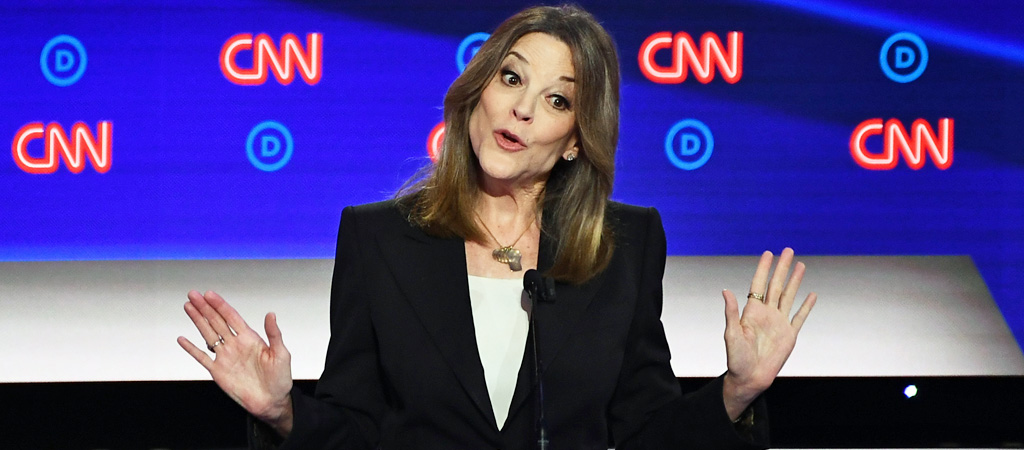
 (@samthielman)
(@samthielman) 